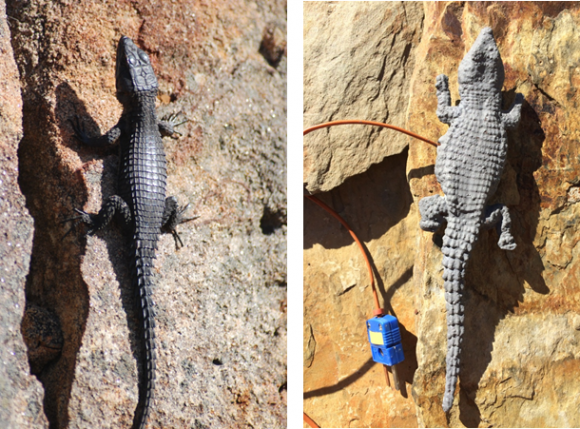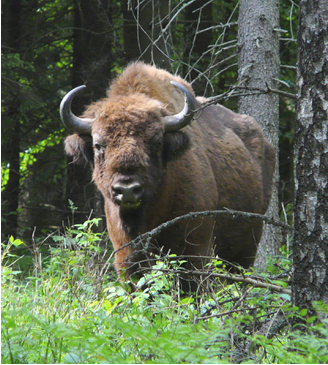2 October 2019 | By Raquel A. Garcia
With a changing climate it becomes even more important to understand how animals experience temperature on the ground. On a warm summer’s day, air temperature sensors might reach 30°C or more, yet a lizard will feel the heat differently in its own environment. One reason for such a difference is the vegetation. Trees, bushes and grasses are strong modifiers of ground temperature. They can provide relief from extreme heat or create microclimates that are too cold for warm-adapted species. Alien plants also modify thermal landscapes, but this effect has not received sufficient attention in studies of alien plant impacts on native biodiversity. The recent study by C·I·B postdoctoral researcher Raquel A. Garcia and C·I·B Professor Susana Clusella-Trullas aims to fill this gap.
A suite of potential mechanisms at the organism level underly the effects of alien plants on native animals, from disrupted herbivory or predator-prey interactions to modified habitat structure. For ectothermic animals, which rely on the microclimate variation in their habitats to maintain optimal body temperatures, changes in thermal niche availability are particularly important. With a focus on native reptiles, amphibians, insects and arachnids, this new study collates published evidence of invasive alien plant effects on thermal landscapes, individuals, populations and communities.
The findings from 37 studies portray an overall detrimental effect of invasive alien plants on native animal populations and communities, echoing previous reviews for South Africa and the world. But what these studies also reveal is that this effect can arise from altered thermal landscapes and consequent changes in animal activity patterns, thermoregulation, reproductive success and growth, which cascade up to the population and community levels.
Although it is tempting to seek generalities, the variation in results across the 37 studies is a reminder that invasive species impacts are dependent on contextual factors, such as the methodology used to describe the thermal landscapes and the traits of invasive alien plants and native animals. To explore this context-dependency, we included in the new study a simulation of body temperatures experienced by virtual Cape skinks navigating thermal landscapes along a gradient of invasion. The skinks were best able to maintain optimal body temperatures in native landscapes, where thermal quality and spatial heterogeneity were higher. By contrast, only highly motile skinks could thermoregulate efficiently in invaded areas, where optimal microsites were more clumped in space.
The thermal ecology field offers tools to measure operative and body temperatures, estimate species’ thermal performance curve parameters, and model thermal landscapes and thermoregulatory behaviour. The new study highlights the value of these tools in plant invasion impacts research and calls for more attention to testing causality along the chain of effects from thermal landscapes to individuals, populations and communities.

Read the paper
Garcia RA, Clusella-Trullas S. 2019 Thermal landscape change as a driver of ectotherm responses to plant invasions. Proc. R. Soc. B 286: 20191020. http://dx.doi.org/10.1098/rspb.2019.1020
Please contact Raquel A. Garcia at rgarcia@sun.ac.za or Susana Clusella-Trullas at sct333@sun.ac.za for further information.




very nice thank you for sharing
Glad you found this information useful